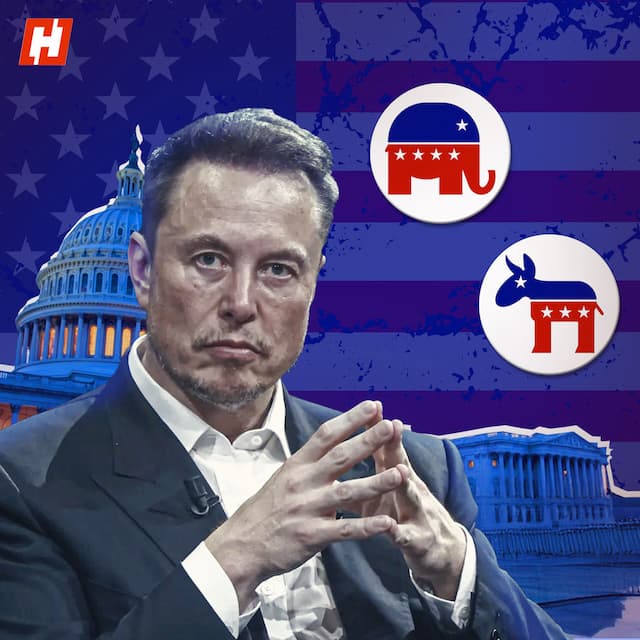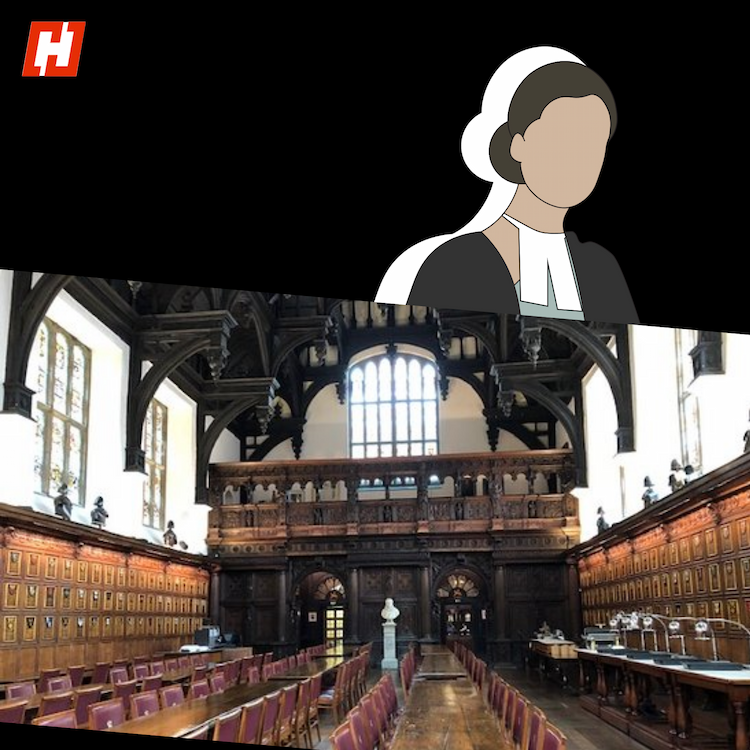Why Elon Musk’s America Party might fail: US two-party system explained

Elon Musk, the CEO of Tesla and the world’s richest man, has announced the formation of a new political party in the United States, called the America Party. Musk held a poll on his social media platform X, formerly known as Twitter, asking if people wanted independence from the US two-party system, where all elections are dominated by the two major US parties, the Democrats and the Republicans. A majority of the respondents voted yes, prompting Musk to announce the "third party”.
Third parties, like the Libertarian Party, the Green Party and the Reform Party, already exist in US. But Americans tend not to vote for the existing third parties, because there are both systemic and legal issues which prevent third parties from achieving success in US politics.
Systemic Issues Preventing Third Party Success in the US
US elections follow a first-past-the-post, or winner takes all format. To win an election, candidates just need to gather more votes than their opponents in the district/constituency they contest from. The US does not hold runoff elections between leading candidates, and voters don't get the option of ranked choice. Each electoral district only chooses one candidate, which means proportional representation is also not an option in American elections.
An example of the effects of the first-past-the-post system is the recent Congressional race to elect members of the US House of Representatives in the state of Nebraska. Nebraska is home to more than 2 million people, with a little over 1.2 million are registered voters. The state sends 3 people to the House. Elections for all three Nebraska House seats were held on the 5th of November, alongside the US Presidential election.
Of the 1.2 million-odd voters in Nebraska, almost 600,000 voted Republican, and more than 330,000 voted Democrat, while the rest didn't vote. If the US had a proportional representation system, then the Republicans would have won two House seats in Nebraska, and the Democrats one, because that was the relative share of the votes. But all three House seats went to the Republicans, because the party won more votes in each of the three Congressional districts in Nebraska. The first-past-the-post system ensured that Democratic party supporters ended up without a single representative in Nebraska, even though they make up one third of the electorate in the state.
US Third Parties and the Spoiler Effect
The systemic issue with the winner takes all format in the US disincentivises voters from picking third party candidates, because the third parties are seen as potential spoilers. An example of the so-called “spoiler effect” is the outcome of the 2000 US Presidential Election. The 2000 election was a close contest between the Democratic Party candidate, Al Gore, and the Republican Party candidate, George W. Bush.
The election went down to the wire, with both candidates tied for electoral college votes, up till the ballot counting in the US state of Florida. In the end, George W. Bush carried the then swing state of Florida by just 537 votes, which led to him winning the Presidential election. The Green Party and its Presidential candidate, Ralph Nader, were accused of playing spoiler in that election, and propelling Bush to the US Presidency.
The Green Party is an environmentalist party, that describes itself anti-war, anti-racism and pro-social justice. On the face of it, the Green party has much more in common with the Democrats than the Republicans. The assumption was that if Nader and the Greens hadn’t stood in the 2000 election, Green supporters would have voted for the Democrats. Though it’s possible that most of the Green voters would have stayed at home because they didn’t like any candidate, the assumption is that if even a few hundred of the 97,000-odd Green supporters went to the polls, they would have likely picked Gore over Bush.
It is likely that Green supporters would have preferred a Democrat as US President instead of a Republican, but by voting for Nader they undermined their own interests. Thus, the spoiler effect in the first-past-the-post or winner-takes-all format discourages the formation of viable third parties in the US.
How Often US Third Parties or Independents Win
Elon Musk’s plan to overcome this hurdle is to start small, by only focusing on competitive House and Senate seats next year, during America’s 2026 midterm elections. However, it's very rare that a third party or an independent manages to win a seat.
Perhaps the most famous independent lawmaker in the US today is Bernie Sanders, the Senator from Vermont. While he usually sides or caucuses with the Democrats, Sanders has always been an independent. But when he was first elected to Congress, to the House back in 1990, Sanders was the first Independent to win a seat in almost 40 years. A handful of third-party candidates had also won a seat or two in the years before Sanders’ win, but there were multiple years where the Democrats and Republicans alone had seats in Congress.
Breaking the Republican-Democrat duopoly is extremely difficult. Even after Sanders showed it could be done, it has only been replicated by a handful of other independents or third-party candidates since. And their count has never exceeded the low single digits.
Legal Hurdles for US Third Parties
One of the major reasons preventing successful third-party runs is the challenge of setting up a national third party. Today, not a single existing alternative party is allowed to compete across all 50 American states.
The biggest third party in the US is currently the Libertarian Party. During the 2024 US Congressional elections, the Libertarian Party was only allowed to compete in 39 states out of 50, or 51 when you include Washington DC. The Libertarian Presidential candidate appeared on the ballot in just 47 of the 50 states, despite the fact that the party has been around since 1971, and it has competed in all 50 states and DC in previous elections.
Some states rescinded ballot access from the Libertarian Party in the 2024 election. The US is rare in that there are very few nationwide, or federal, electoral regulations. Most rules regarding elections and political parties are determined by the individual states.
In Illinois, parties and independent candidates need to get a certain number of people to sign nomination petitions. For the Democrats and Republicans the number is miniscule, whereas for independents and third parties it is 5% of the total number of people who voted in the previous election. Illinois also requires political parties to gather nominations within a time-limit, starting just 90 days before the deadline to register candidates. That means third parties and independents need to get tens of thousands of signatures in 90 days.
Some states need parties to get a certain number of votes per election. If they don’t, the parties can be decertified or deregistered. That’s why even the Libertarians are only on 39 state ballots today, even though they were in more states previously. The restrictive ballot access laws have been upheld as constitutional by the US Supreme Court, so it’s up to individual states to change them. Since all US states are governed by either the Democrats or the Republicans, it is a conflict of interest for the two main US political parties to change anything.
History of the US Two-Party System
America has always had a two-party system, but the two parties themselves haven’t always been the same. The first two parties, the Federal and Democratic-Republican parties, were closer to loose groupings than real political parties in the modern sense. They eventually merged, bringing about a single party era, known as the “Era of Good Feelings”.
The Era of Good Feelings lasted for about 10 years, between 1815 and 1825, before ending with the creation of two new parties. One of them was the Democratic Party, created by supporters of Andrew Jackson, who eventually became the seventh American President. Jackson's Democratic Party is the same one that exists today.
The second party formed after the Era of Good Feelings was known as the Whig party, which lasted a few decades before eventually being subsumed by the Republican Party in the 1850s. That’s when the US got the two parties it has today. So, while a “three party” or more system may not be feasible in the US, history shows that the two parties aren’t necessarily fixed.
To create a successful political party in the US, Elon Musk doesn’t necessarily have to defeat and overhaul the American electoral system. He just has to defeat and absorb one of the existing parties. It’s an almost equally daunting task, but it isn’t impossible.
Trending in Geopolitics

The only Indian ever executed by the Nazis — M. Madhavan

'New world order' that never was: 80 years since World War 2

Why advocates wear black and white

